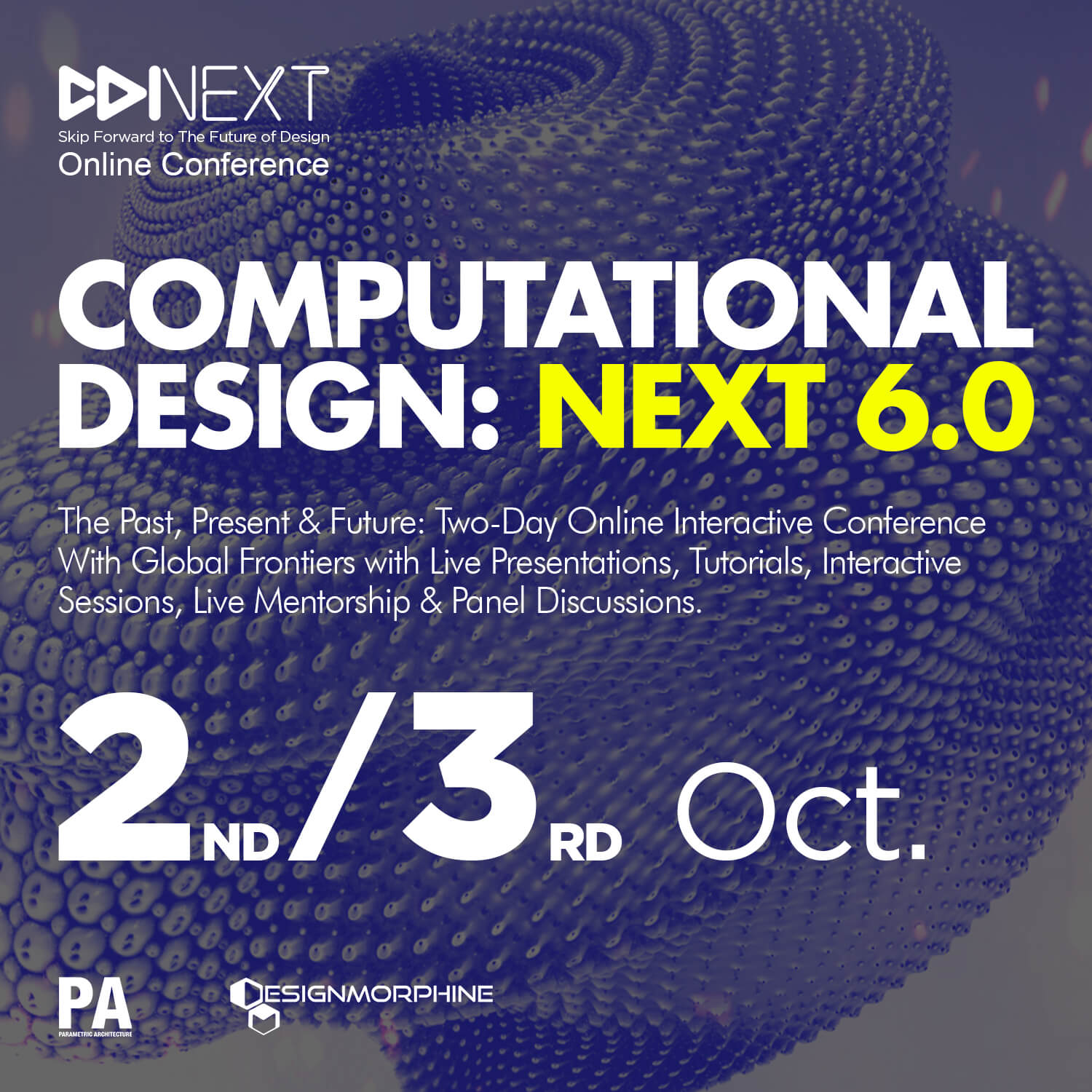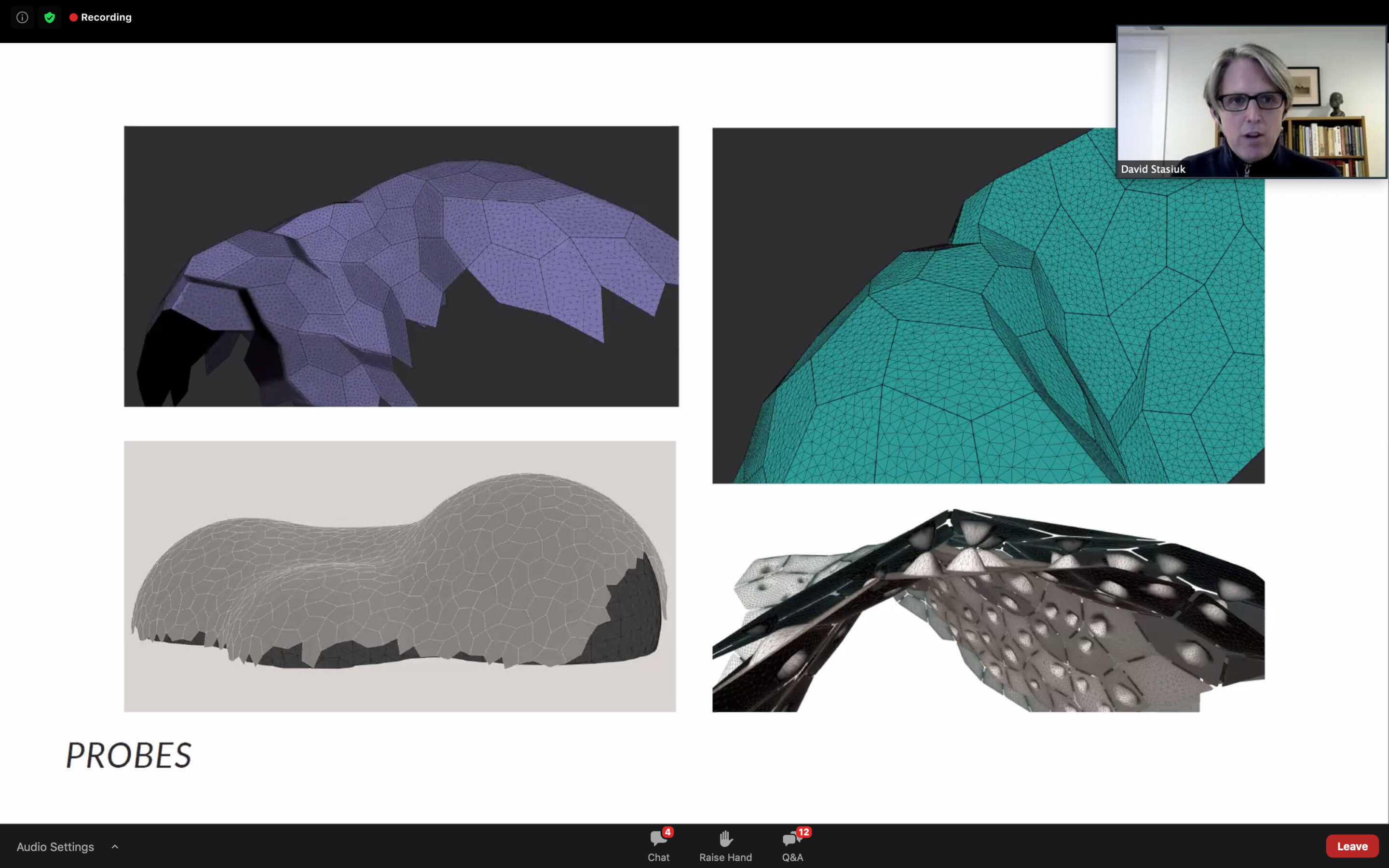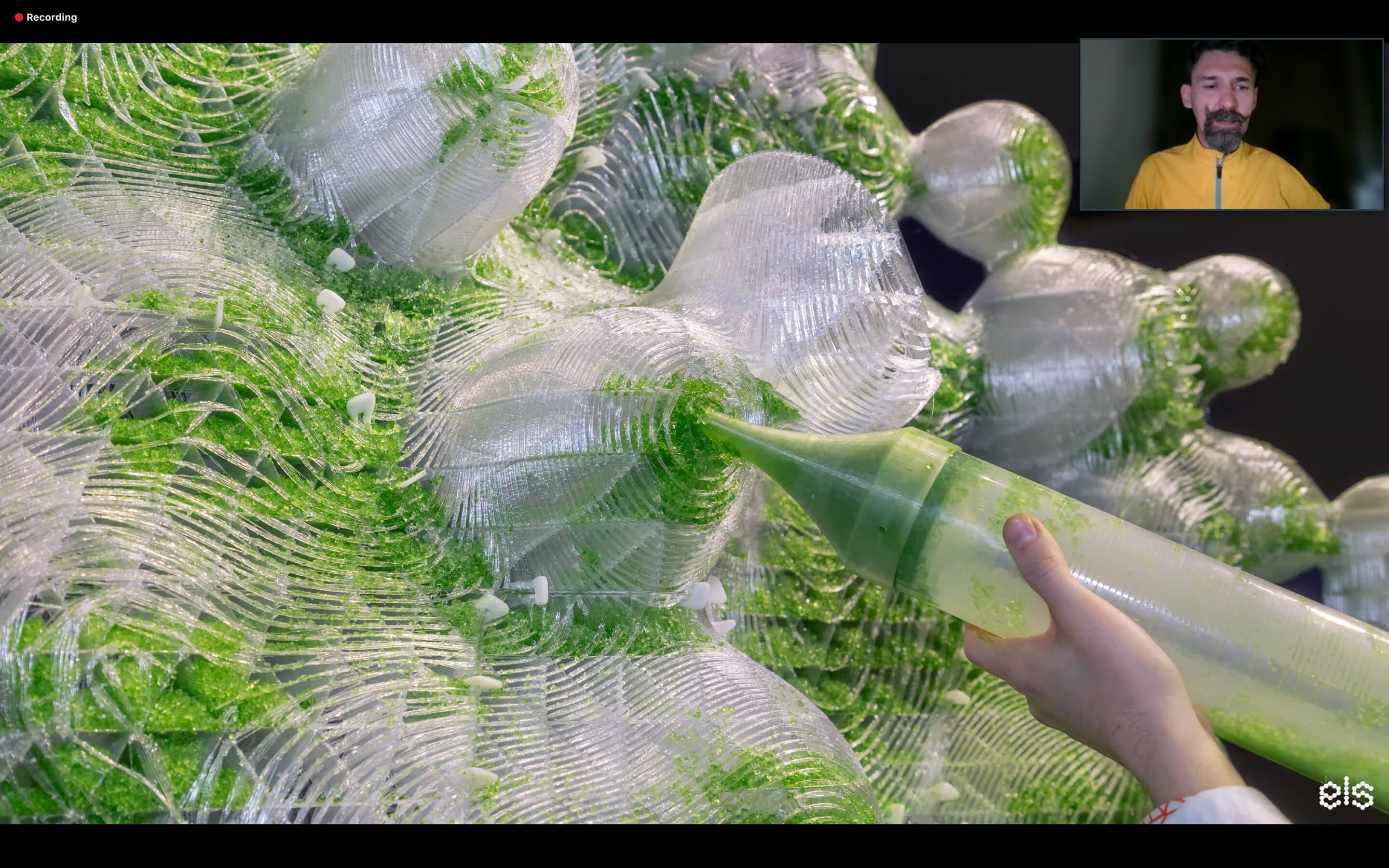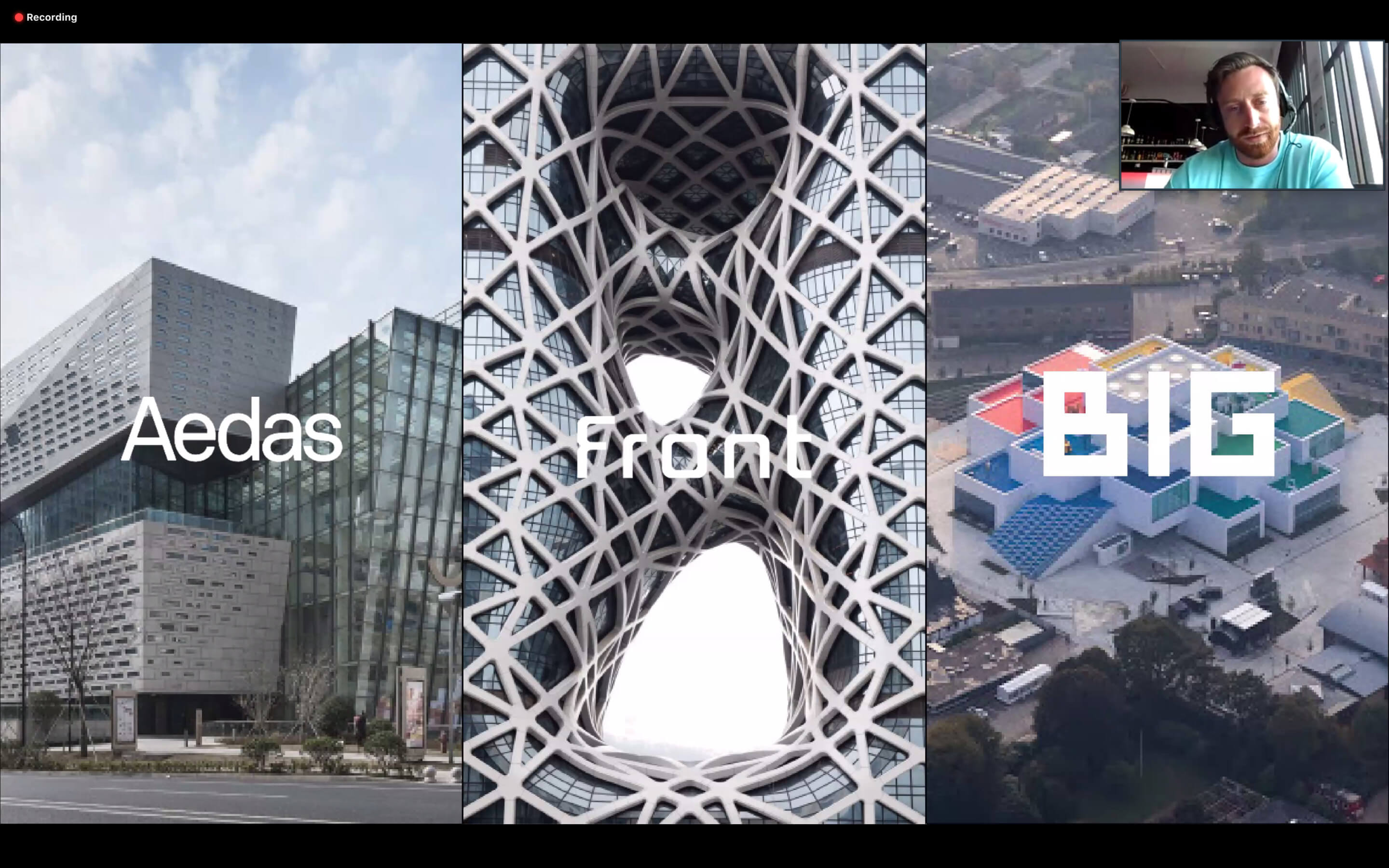You’d be forgiven if, upon hearing the terminology quad-based remeshing, ngon-based meshes, open topologies, and tropisms, you wondered if you had been slipped the Zoom link to presentations of thesis dissertations at the ETH Zurich and not ParametricArchitecture and DesignMorphine’s Computational Design: NEXT 6.0 conference. While we may begrudgingly add another webcast event to our calendars, the sixth iteration of CD Next brought together a number of worthwhile talks and workshops with plenty of useful discussion on the role and practice of computation in architecture today.
Taking place over October 2 and 3, CD Next featured eight speaker presentations and four interactive workshops with contributions from Jenny Sabin of Jenny Sabin Studio, Andrew Kudless of Matsys, and Oliver Thomas from BIG, among many others. Perspectives across the spectrum were represented from theory to practice, including researchers, educators, computational design specialists, fabricators, and practicing architects.

David Stasiuk, a senior algorithm designer at the NXT Advanced Studio for Nike Innovation in Portland, Oregon, spoke on his prior experiences in research-based architecture with Bespoke Geometry. The projects Stasiuk presented included the computational modeling of the steel structure for Trahan Architect’s Louisiana Sports Hall of Fame and Museum, an installation of “growing” bent rattan branches and robotically formed stressed-skin metal panel pavilions. A nice warm-up early in the event, it was still disappointing that Stasiuk’s current projects at Nike are under wraps and weren’t discussed.
Thomas, a senior design technology specialist, presented a survey of recent BIG projects (of which there are many) alongside the six “toolsets” the firm considers in their digital design processes, including: modeling (Rhinoceros 3D, or Rhino), computation (Grasshopper, a visual scripting plugin for Rhino), BIM (Revit), visualization (VRay and Enscape), immersive (virtual and augmented reality platforms), and digital fabrication. While BIG is known for their iconic if simplistic formal moves—usually accompanied by a series of diagrams where a base form for a typical building typology is twisted, morphed, or deformed by site considerations, views, or other project-specific constraints—Thomas insisted that computational design need not be reserved for twisting or complex geometry (a clear dig at the parametricism of Patrik Schumacher, who leads Zaha Hadid Architects). BIG’s block-like architectural forms are “not a form-driven thing” according to Thomas, but a method of rationalizing, simplifying, and ultimately making buildable and economically feasible designs through computational design software.

The highlight of the program was clearly Andrew Kudless’s keynote lecture to close out the event. Kudless, the Bill Kendall Memorial Endowed Professor and director of the Advanced Media Technology Lab at the University of Houston’s Hines College of Architecture, presented the work of his research and his practice, Matsys—a name derived from his interest in material systems. Kudless touched on a broad range of topics across four sections related to contemporary computation, including drawing, material practices, solidarity with nonhumans, and his well-publicized pavilion at Confluence Park in San Antonio, Texas. While the pavilion, an aesthetically beautiful, ecologically sensitive, and engineering-rigorous project was what most attendees were likely (and rightfully) looking forward to hearing about, he also spoke on the generative nature of computation and drawing itself. For Kudless, computational design doesn’t have to be “twisting towers.” Algorithms can be “a way to work quickly and connect ideas with machines”—not terribly different from how the napkin sketch has long been a means for architects to quickly connect intuition with logic.
Several themes emerged during the event, the first and most prominent being that “parametric architecture” does not belong to the Schumacherian “parametricism” that he has claimed to be the dominant stylistic paradigm of contemporary architecture. There was a clear attempt by multiple speakers to distance themselves from this line of thought, going so far as to say that “parametric design” may not be the best term, favoring “computational design” and “generative design” instead.

While there are subtle semantic distinctions between the terms, the underlying message is clear: The technological avant-garde of architecture must rebrand if it is to escape the shadow of its standard-bearer, as computational architecture today takes many forms that may not resemble the work of Zaha Hadid. As with any generational divide, the current generation seeks to make their own mark, particularly when their forebears set an impossibly high bar. For these younger designers, the key may be in recognizing that algorithms don’t precipitate a certain aesthetic result, but that they can be valuable in making a more equitable discipline scarred by a history of overwork and exploitative office cultures. Unless and until computational designers address and demonstrate how the automative capacity of algorithms can facilitate that reckoning, semantic distancing will just be a missed opportunity
Additionally, on labor and semantics, the term “digital superuser,” explicitly used in Thomas’s talk but alluded to throughout, was a central tenet of the event. The next generation of architects will essentially be a middleperson between an architect-designer who is disengaged from the tools of production and a technical specialist who functions as a consultant, whether in-house supporting personnel or externally. It’s a nice thought; not all architects need to be computational designers, and architects with computational knowledge are valuable in design roles and not just as support and research specialists. But as the architect has traditionally been the jack-of-all-trades/master-of-none, how many more trades can we expect younger designers to take on?

A common complaint about architecture academia is that students don’t graduate into practice with enough knowledge of how buildings work, of how practice functions, of code, and so on—but this is less a problem of academia and more of a discipline that is willing to fold in anything and everything it can into its purview of knowledge (but not their responsibility or risk). Architecture’s desire to include as broad a context as possible to create richer, more inclusive built spaces is a noble one, but it can leave the architectural worker anxious, unstable, and stretched-thin in a constant pursuit of more. There will certainly be architects who can code, who can use Grasshopper, who are excellent modelers, whether physically or in Rhino, who understand engineering, structures, and physics, but it’s also okay to have theorists, teachers, and designers who excel only at sketching but suck at Revit in our circles. It’s okay if computational designers just need to be consultants to architects. It’s okay if “parametric design” is a niche aesthetic project, understood in the history of architecture as most styles are. To levy the expectation that architects need be “superusers” with a “digital superpower” is to reify the toxic standards that demand far too much self-sacrifice for a practice which we are “passionate” about.
For the hosting organization, CD Next 6.0 is further proof that ParametricArchitecture, which began five years ago as an Instagram account committed to reposting the work of others relevant to their theme, has established itself as a legitimate, 21st-century media organization. Closing in on one million followers on Instagram, PA has turned its following into a website of project features, occasional news stories, a podcast interview series, and educational events like CD Next. While calling CD Next “ACADIA-lite” might be a bit generous, for a fraction of the price the events are relatively affordable and accessible for workshops and lectures from highly-respected computational designers like Michael Pryor, Sabin, Statsiuk, Thomas, and Kudless, among others. Although ACADIA is less expensive this year due to being a digital conference, full tickets for non-students in 2019 were nearly $900; CD Next 6.0 was $69 (60 euros). The usual concerns with tech (and architecture) apply here: only four of fourteen contributors to the event were women, and inside jargon that can feel exclusive abounded. But this was clearly an intercontinental event that featured world-class projects and prompted important discussions; in other words, a success.
ParametricArchitecture and DesignMorphine are hosting the next CD Next event, Computational Design: NEXT 7.0, on December 11th-12th.











